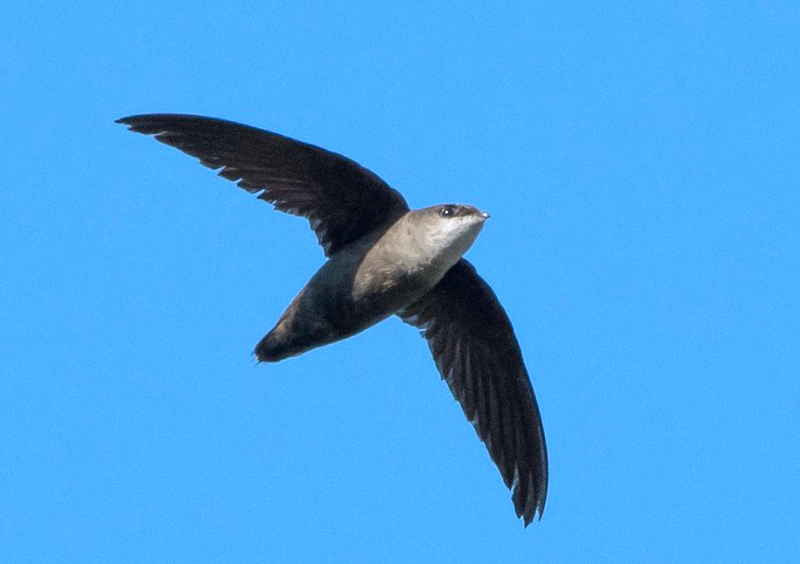| Summer Resident |
Chimney Swifts are the true harbingers of spring. They spend most of their lives hawking insects, and they show up when the weather is warm enough for flying insects to be in the air. They winter in South America and usually begin to arrive around the second week in April. They breed in the Washington metro area, but not at Monticello Park. There are several places in the Washington Area where during part of the summer, you can see thousands of Chimney Swifts funneling into a chimney at dusk.
Where to See Them in the Park
You might see Chimney Swifts flying over Monticello, but they never land in the park. In fact, they typically never land anywhere until they go to their evening roost sites.
Physical Description

Chimney Swifts look like sooty cigar butts with sickle-shaped wings. Chimney Swifts hawk insects in the air like swallows, but you are not likely to mistake a swift for a swallow if you see it well. Sometimes, many Chimney Swifts will hawk insects in the same area. Swifts are aptly named, because their flight is swift. The wingbeat is fast and shallow. There are no other swift species in the eastern United States.

Vocalizations
Swifts are quite vocal, and the best way to tell if they are around is by listening for their chittering call.
Hear the calls of the Chimney Swift.Notes
Swifts are in the same order as hummingbirds, and both are in the small group of birds in the world incapable of walking. Swifts are in the family Apodidae, which means without feet. Swifts have feet, but they are small and weak, adapted for clinging to vertical surfaces such as the inside of chimneys. Before humans built chimneys, Chimney Swifts used to nest on and cling to the walls of caves. They spend most of their lives in the air, and some Chimney Swifts are estimated to have flown more than a million miles during their lives.
Origin of Names
Common Name: Chimney because they roost and nest in chimneys. Swift from their fast flight.
Genus Name: Chaetura is Greek for bristle tail.
Species Name: Pelagica means related to the sea. The name was an error. It was supposed to be pelasgia, after an ancient nomadic tribe, because of the bird's long migration. The error has never been corrected.
Chimney Swift video footage
Return to the Index
